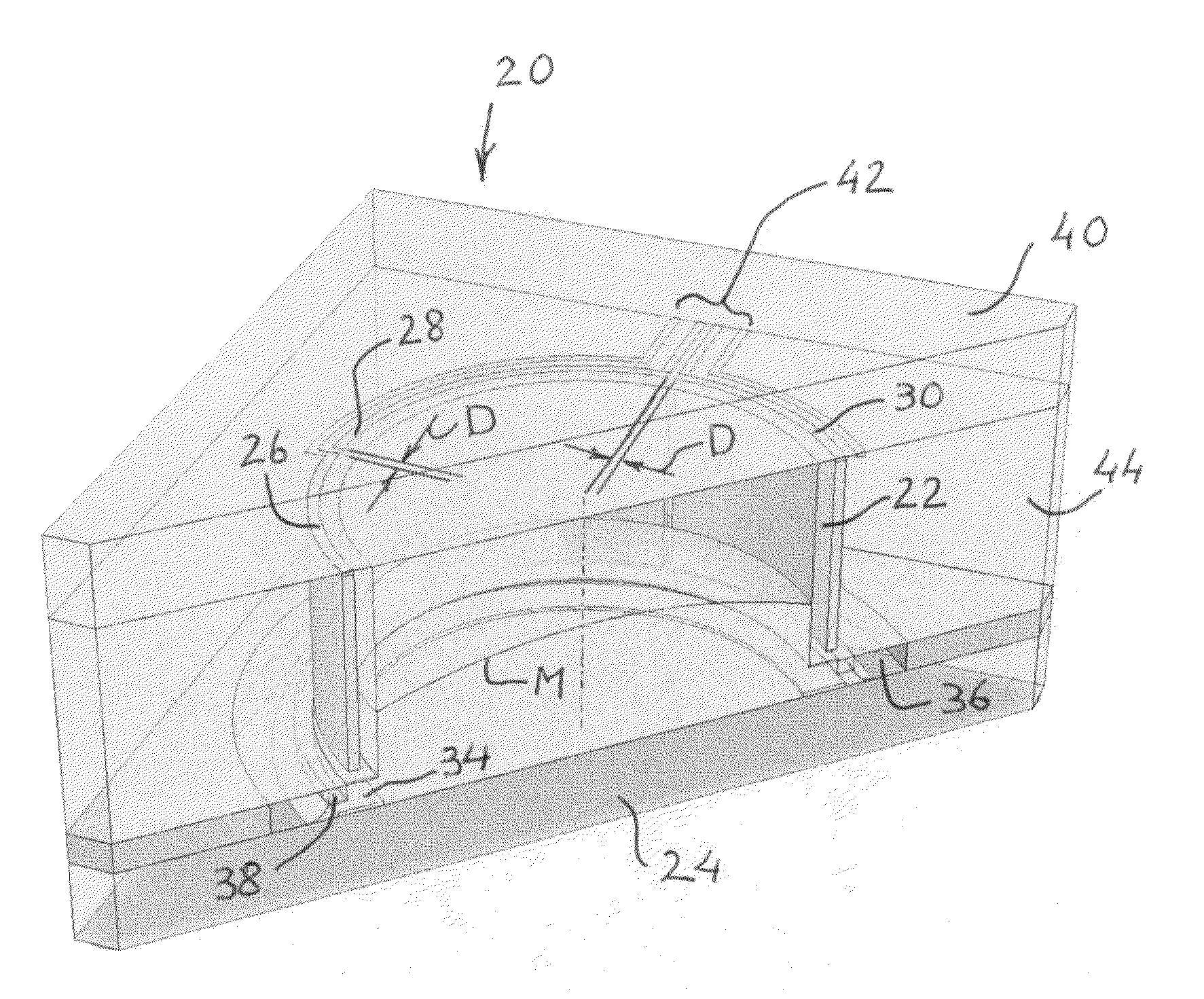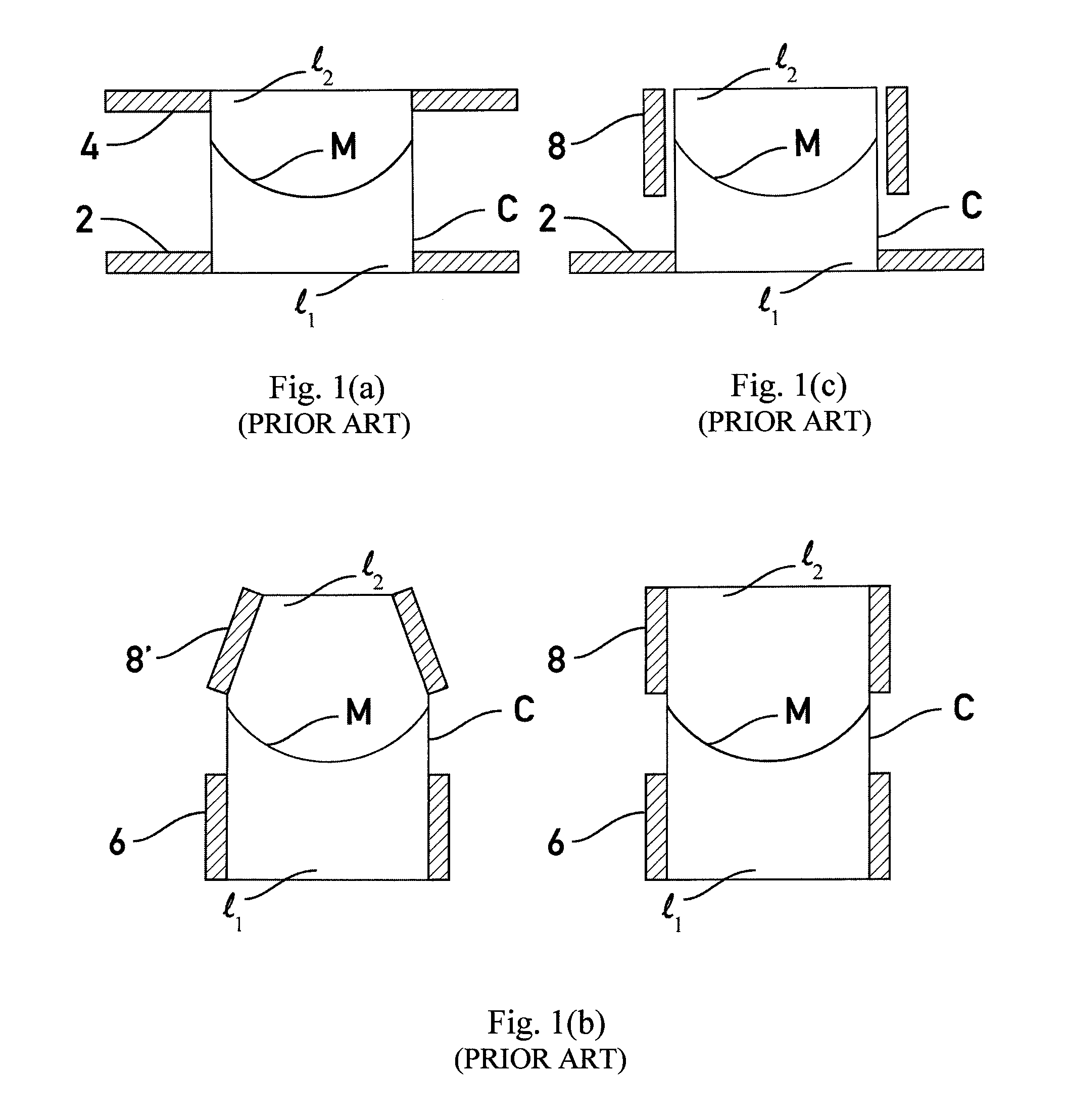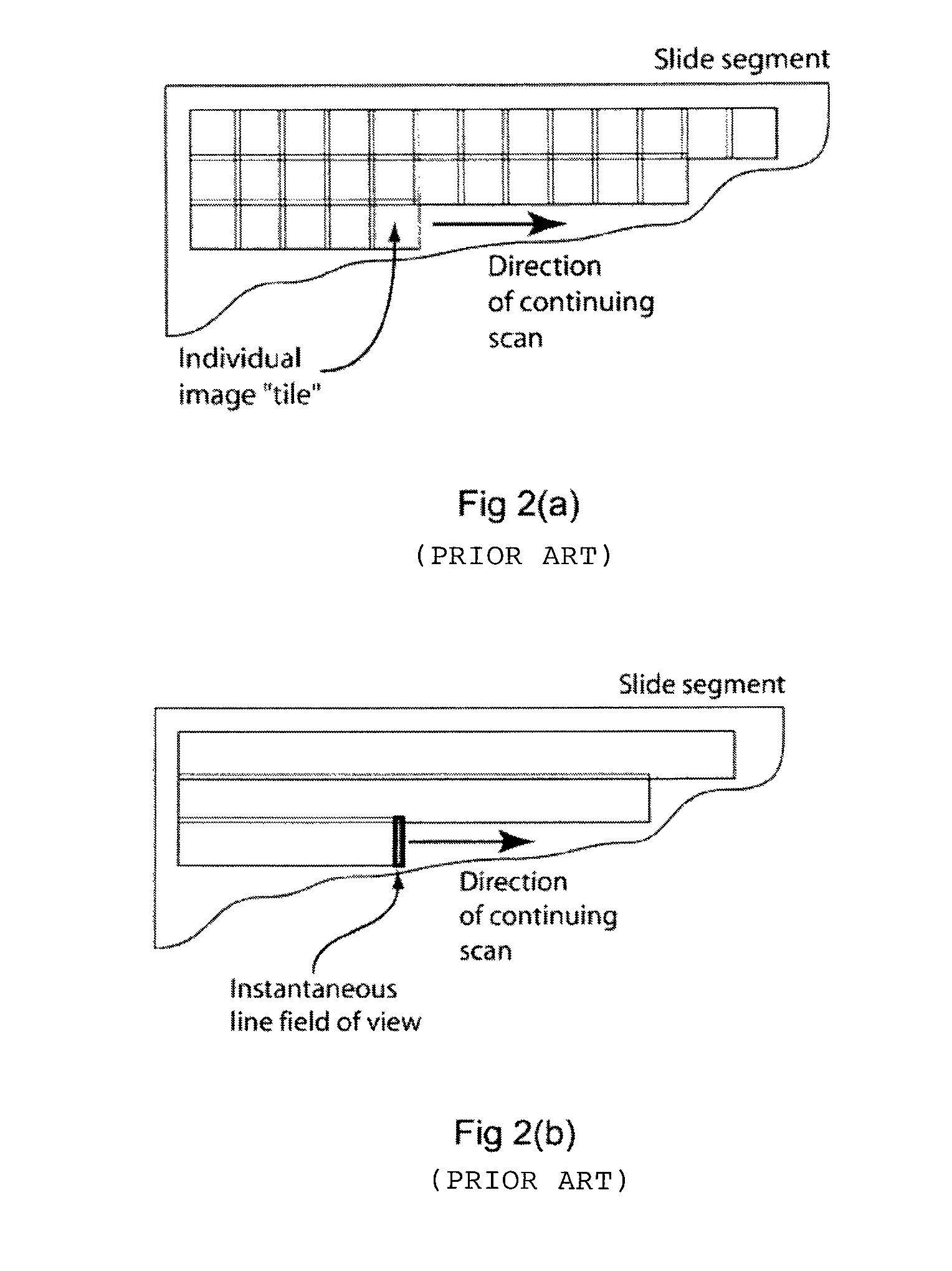Liquid-lens variable-control optics in array microscope
a liquid lens and array microscope technology, applied in the field of array microscopes, can solve the problems of inability to focus imaging elements on tissue, limited finite area of array of passive imaging elements, etc., and achieve the effect of constant transverse magnification and limited diffraction image quality
- Summary
- Abstract
- Description
- Claims
- Application Information
AI Technical Summary
Benefits of technology
Problems solved by technology
Method used
Image
Examples
Embodiment Construction
[0025]Existing microscope optics enable two principal image-acquisition approaches. These approaches are represented in every whole slide scanning system available commercially. There is a “step-and-repeat” approach in which individual image fields (also known as “tiles”) are recorded and the stage bearing the microscope slide is advanced to the next field, as illustrated in FIG. 2(a). For a typical 20× field-flattened objective, this approach results in several thousand image fields for a 20 mm by 50 mm virtual slide, depending on how much field overlap is provided and whether a complete record of the slide is made. The other approach is to use a linear detector array covering the diameter of the field of view of the microscope objective. This results in a swath that could cover the entire width of a slide, to be repeated, after a step-over, for a 50 mm long slide (typically 50 times). This approach, illustrated in FIG. 2(b), is sometimes referred to as “push-broom” scanning.
[0026]...
PUM
| Property | Measurement | Unit |
|---|---|---|
| diameter | aaaaa | aaaaa |
| diameter | aaaaa | aaaaa |
| width | aaaaa | aaaaa |
Abstract
Description
Claims
Application Information
 Login to View More
Login to View More - R&D
- Intellectual Property
- Life Sciences
- Materials
- Tech Scout
- Unparalleled Data Quality
- Higher Quality Content
- 60% Fewer Hallucinations
Browse by: Latest US Patents, China's latest patents, Technical Efficacy Thesaurus, Application Domain, Technology Topic, Popular Technical Reports.
© 2025 PatSnap. All rights reserved.Legal|Privacy policy|Modern Slavery Act Transparency Statement|Sitemap|About US| Contact US: help@patsnap.com



